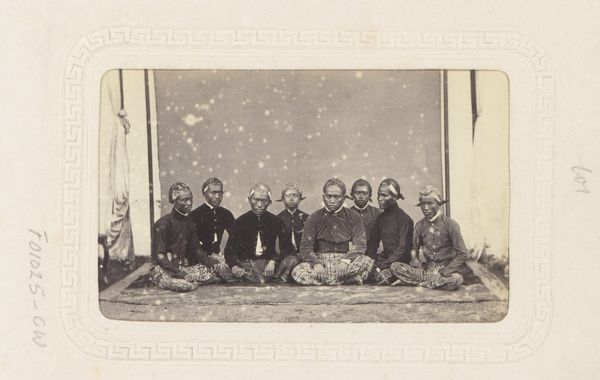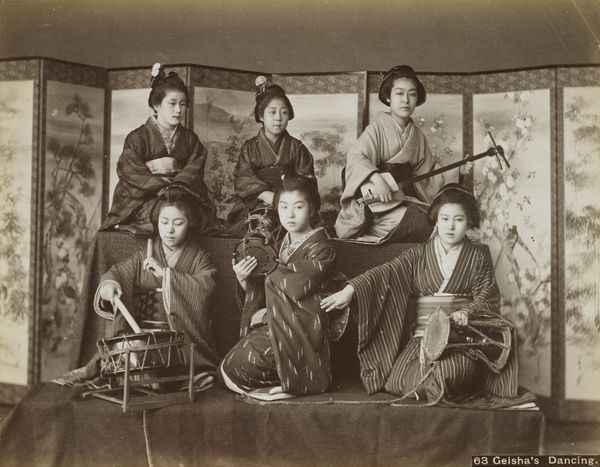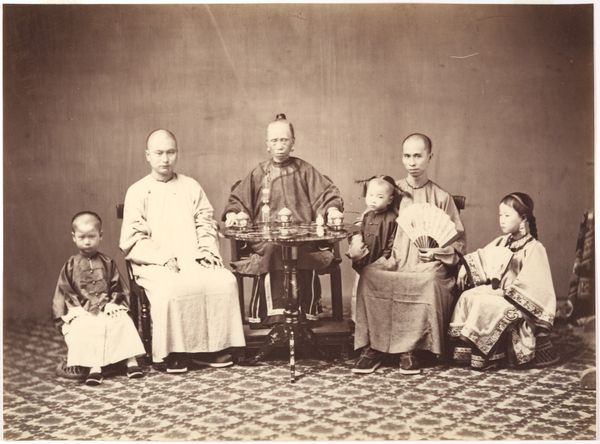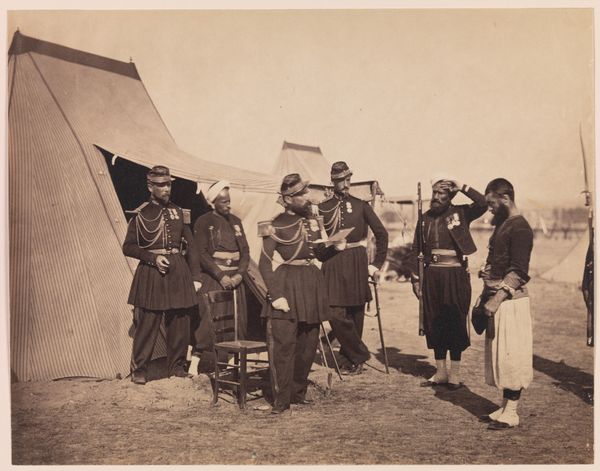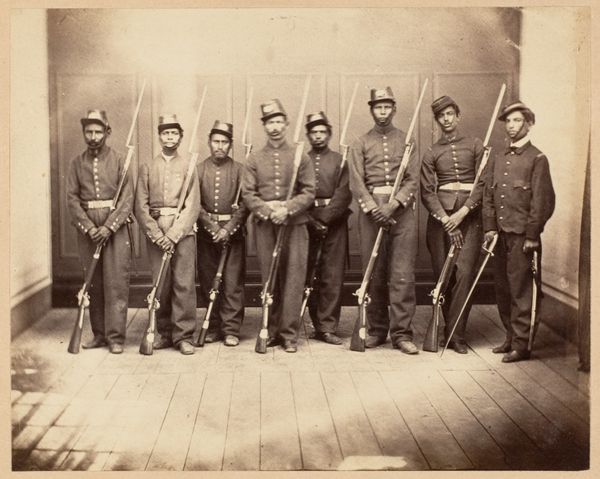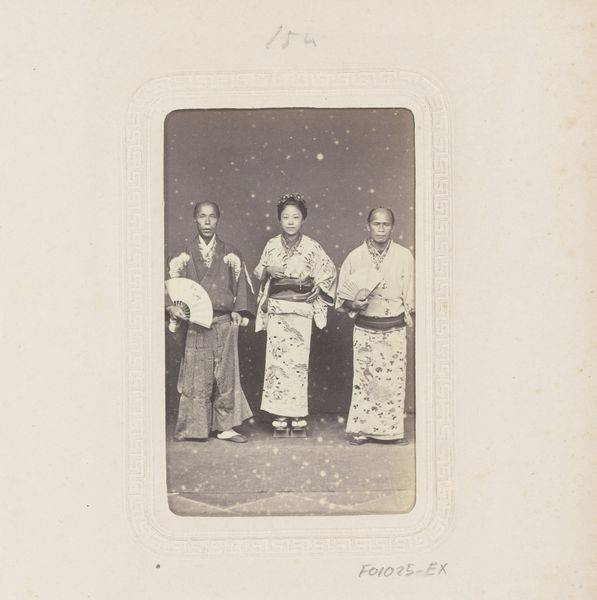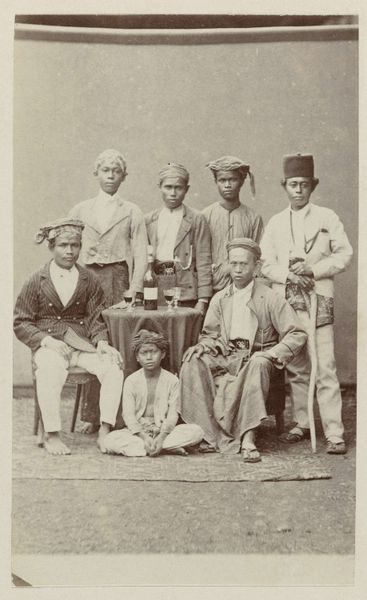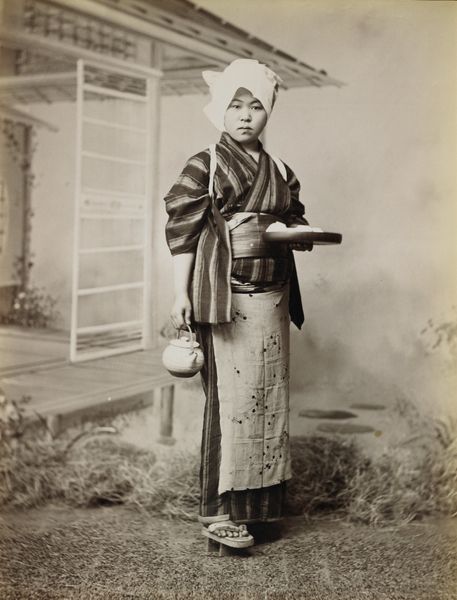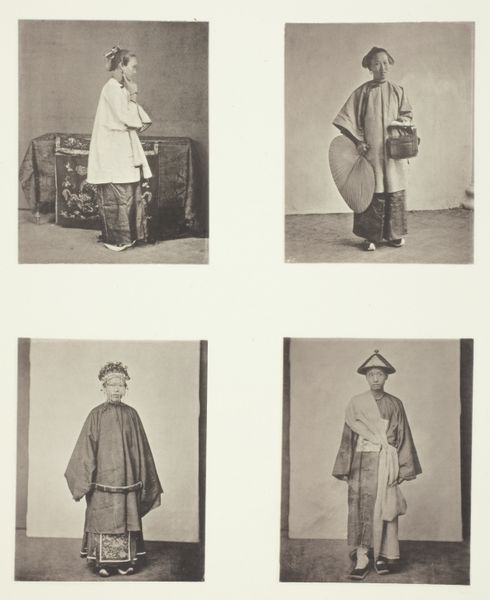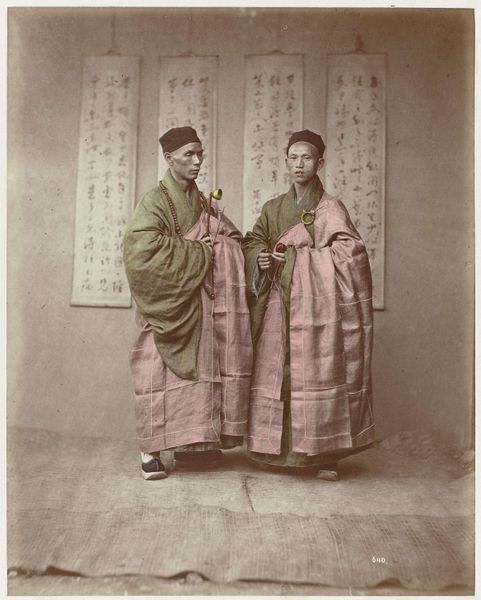
Dimensions: Image: 6 15/16 × 9 3/8 in. (17.6 × 23.8 cm)
Copyright: Public Domain
Editor: Here we have Lai Fong’s photograph, "Culling Tea," taken around 1869. It captures six women meticulously sorting tea leaves. I’m struck by how matter-of-fact it is. It’s a glimpse into a very specific labor, and I wonder about the process itself. What details jump out to you? Curator: It's precisely this glimpse into process that commands attention. The photo isn't just about tea; it's about labor, materiality, and social structures. Note the repetitive action: each woman at her small station, hands moving deliberately. Consider the wooden tables, the woven trays, the very texture of the tea itself. Editor: So you're seeing the materiality as a core component of its message? Curator: Absolutely. We need to ask ourselves about the conditions in which this tea was produced, sorted, and eventually consumed. This photograph makes visible the often-hidden labor that underpins global commodities. Editor: It definitely complicates any romanticized notion of tea, doesn't it? I mean, seeing it as purely a relaxing beverage… Curator: Exactly. And notice the women's clothing—relatively simple, utilitarian. Think about the context: late 19th-century China, with Western influence growing. This image captures a moment of traditional craft meeting a global market. It prompts questions about value, exchange, and cultural dynamics. How does this image challenge or reinforce those boundaries? Editor: I never considered it like that before. It is much more about how the material components play a pivotal role. It’s really amazing. Curator: Right? This helps me to look beyond simply aesthetic enjoyment, and see the cultural exchange involved.
Comments
No comments
Be the first to comment and join the conversation on the ultimate creative platform.
